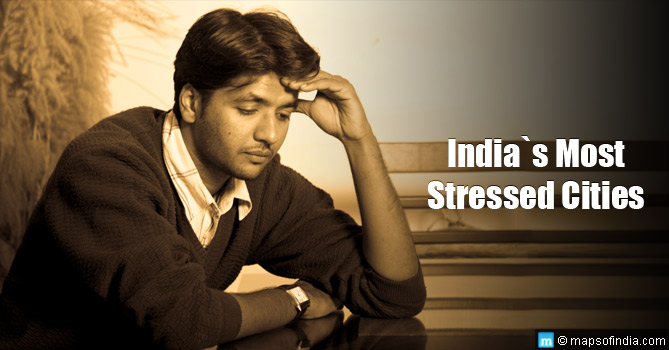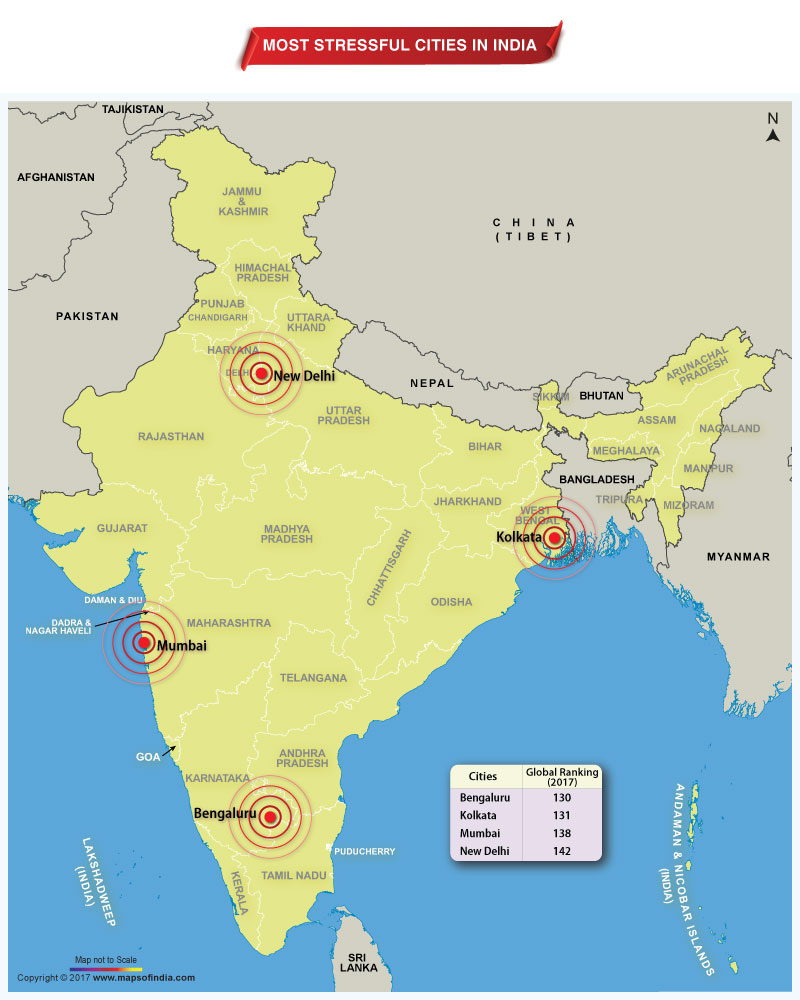With the rampant urbanization and modernization, the contemporary lifestyle comes with its own challenges. The popular English idiom “Don’t judge a book by its cover” is significant to elucidate the facades of this modern world. For Modern lifestyle is not as pleasant as it seems to be. Anxiety and Stress are part and parcel of the modern metropolitan world. Stress has a wide ranging magnitude and can not be compartmentalized into a rigid definition. Like the hues of a rainbow, the degree of stress varies from person to person and is affected by the innumerable circumstances. The environment in which a person lives also plays a pivotal role in affecting the physical and psychological health of a person.
Life is meant to be lived happily, enjoying each and every moment of this blissful world. But in the fast paced world of today, human beings are mechanically moving on a pathless road, along with the crowd towards a concrete jungle with their eyes stuck on their cell phones, tablets and their fingers mechanically typing on their laptops/keyboards. Technology which was invented to aid man had through the process made man a machine. In order to cope up with efficiency, relationships, work pressure and to excel in their respective fields, modern man is becoming a victim of stress.
Claustrophobic environment, fast-paced life style, work pressure along with innumerable factors conglomerate to increase the stress levels. Stress can be seen as a process whereby an individual perceives and responds to events that he appraises as overwhelming or threatening to his well being. Stress not only affects the physical well-being of a person but has hazardous effects on one’s psychological well being as well. Short term stress or positive stress may be beneficial but Chronic Stress pertaining to various complications of life can be hazardous.
According to the United Nations, as of 2016, 54.5% of the world’s population live in cities which are projected to rise to 60% by 2030. Quantifying stress pertaining to various spaces and locations is difficult. A London-based laundry service, Zipjet, has conducted a recent study to create a “stress-ranking” of the most and least stressful cities around the world. The study analyzed 500 cities world wide and selected 150 cities on following parameters- City itself, measuring density, green spaces, public transport, traffic congestion, perception of security, sunshine hours (average/year); measuring air, noise and light pollution level; finance, measuring unemployment, debt per capita, family purchase power, social security, mental health, physical health, gender equality and race equality.
As per the study, Germany’s Stuttgart, Europe’s Luxembourg, Germany’s Hannover, Switzerland’s Berg and Germany’s Munich makes it to the Top 5 Least Stressed Cities on Zipjet’s Ranking. However, not a single Indian City has made it to top 100 least stressed cities. Four Indian Cities are at the bottom of the pile- Bengaluru ranked 130, Kolkata ranked 131, while Mumbai ranked 138 and Delhi, the capital city of India ranked 142. Cities of India lagged behind on some of the key parameters like density, air pollution, social security and gender equality. Bengaluru, Kolkata, Mumbai and Delhi scored 9.76 for social security. As per Zipjet study, increasing number indicates a high level of stress and a low number is indicative of low levels of stress. Pertaining to gender equality, Delhi scored 8.67 while Bengaluru scored 8.91. While air pollution in Bengaluru was high with 9.15 score and that of Delhi scored 8.97. This recent study for the Least Stressful Cities of 2017 elucidates the fact that the capital city of India, is one of the most stressed cities in the world. High-stress levels lead to disruptive physical and psychological well being of a person.
Read More..
Best Foods for a Healthy Heart
Best Calcium Rich Foods For Healthy Bones
5 commonest lifestyle diseases in India
Vitamin Deficiencies – India’s Health And Nutrition Crisis






